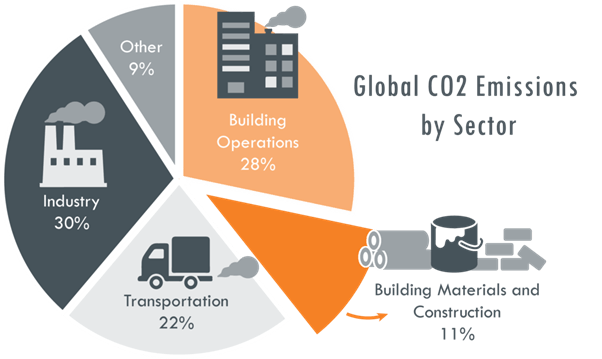
Malcolm Johnson
Questions answered by this expert
Dr Malcolm Johnson from Huon Valley Council explains what could happen in Tasmania and how we can work together to avoid the worst impacts.
Fascinating question, the short answer is absolutely! In fact, buildings account for approximately 40% of global CO2 emissions (the main source of climate change), so if we actually want to make a serious impact on the amount of current emissions, we have to invest more resources in building more eco-buildings and retrofitting existing buildings to be more sustainable. However, ‘sustainable buildings’ consist of two separate but connected aspects related to their emissions, which are typically called operational carbon and embodied carbon.

Operational carbon refers to the emissions that are produced to keep a building running. This includes running heat or air conditioning, powering lights and computers, and making sure water and waste are going to the right places. Typically, when we make decisions to reduce emissions in our schools or homes, to make them more sustainable, we focus on these operational emissions, such as using more energy efficient appliances or making renovations that reduce the need to run heat or air conditioning year-round. Fortunately, there are countless approaches we can take to reduce operational carbon in buildings, make them more efficient, and ensure they emit at little carbon as possible. Yet, while operational carbon accounts for a larger share of global emissions at 28% compared to embodied cardon at 11%, it is estimated that these will be the same by 2050.
So what is embodied carbon? This is the amount of carbon emitted during the construction of a building, including the raw materials, their manufacturing and refinement, transport from one location to the next, and the waste produced during construction. Walls, carpets, support beams, and everything that makes up a building is manufactured and produces emissions. The biggest challenge with embodied carbon is that once a building is up, those emissions cannot be reduced, even with the most energy efficient appliances. With Australia expecting the construction of hundreds of millions of new homes, apartments, and offices by 2050, it is essential that they are not only built to be energy efficient, but also built efficiently to reduce the amount of embodied carbon as much as possible.










